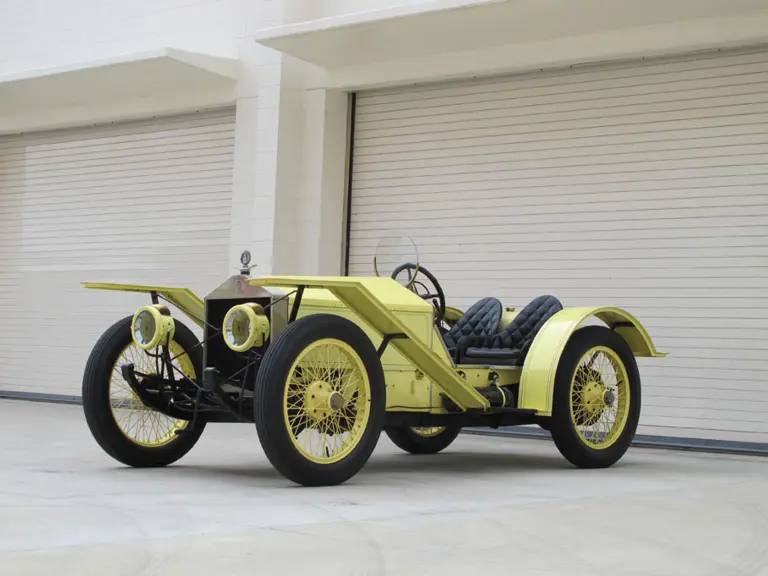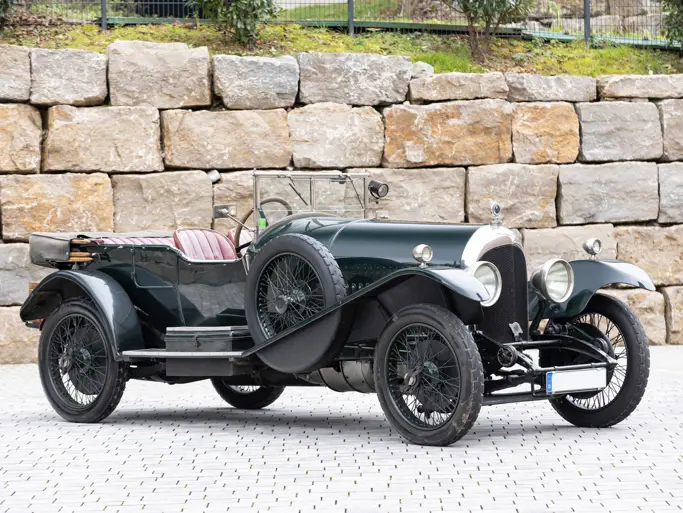From no less an authority than the late, respected Duesenberg expert and author Fred Roe (Duesenberg: The Pursuit of Perfection, Dalton Watson LTD., 1982) comes the background on this unique speedster that was clearly inspired by the styling of the Mercer Raceabout.
As related by Mr. Roe, from a letter dated April 1993, this car was built as a hobby by Mr. Lassiter Hoyle in the 1940s. He was an unmarried man that lived with his grandmother and who indulged in endless automotive pursuits from his boyhood until the mid-1950s. He owned, swapped and traded many cars of all kinds. At the same time Mr. Hoyle collected automotive photographs by the thousands and literature just as intensively.
The quest for power and speed was very strong in Southern California in the late ‘30s and the formal hot rod movement was just beginning in this region at the time. It resulted in the creation of many outrageous combinations of existing automotive technology, some for competition, others for the sheer fun and the pure joy of creation. Mr. Roe believed that fun and creation was Mr. Hoyle’s primary motivation, but he enjoyed testing his creations for top end speed and rate of acceleration. He had previously built a “powerful beast” using a Duesenberg Model J engine in 1942 that is pictured in Mr. Roe’s book on page 264.
Mr. Roe believed that Mr. Hoyle was well-aware of the solid movement in the Los Angeles area of the period preservation and enjoyment of pre-World War I antique cars and did not feel that this car was built by dismantling complete cars of their components to build this special, instead he proceeded by acquiring loose parts. The platform is based on a 1912 Regal underslung chassis and a Roamer-Duesenberg four-cylinder engine. Mr. Hoyle had a friend who specialized in “playing” with old Duesenberg-powered Roamers and either from or with his help, acquired the powerplant. The car was put together through sheer ingenuity that culminated in the car we have on offer.
Fred Roe was confident that Lassiter Hoyle did not intend to deceive anyone that this was an authentic factory-built old car, but it inevitably became known as either a 1912 Regal or the settled upon 1914 Roamer with Duesenberg engine. Regal built the model with the underslung frame from 1911 to around 1914, so this is accurately portrayed. There were no Roamers until 1916 and no Roamers with the Rochester-Duesenberg production engine (which the car carries) until late 1919 at the very earliest. So it would be incorrect to claim that the engine or other associated Roamer parts as being any earlier than 1920 or 1921. Certainly the look of the car suggests an early date, and we also know that the car was allowed to participate in activities of the early meetings of the Horseless Carriage Club of America (HCCA).
Mr. Roe related that after losing track of the car when Mr. Hoyle disposed of it from his collection; he saw it in Hershey, Pennsylvania in the early 1970s. After a few different owners, it settled in a museum until being made available at this point in time.
The car is well-documented in this form and also appears in “Duesenberg: The Pursuit of Perfection” on page 72. Mr. Roe concluded that the automobile was central to American life in the 20th century and upon its introduction was seized upon by thousands of individuals who thought they could make it better or bend it to their own ideas for its final use. The irresistible American urge to tinker, originate and improve found the automobile a most welcome subject, and this thought and practice continues to this day, no matter the technology. It was further concluded to be a true piece of automotive Americana dating back nearly 70 years.
Displaying the Rochester-Duesenberg engine, manual gearbox, Regal frame and tidy angular fenders make for an impressive period piece. Buffalo wire wheels, monocle windshield, motometer, tufted individual seating and many brass components all add up to a very specialized and intriguing car that has a many year, documented history.



 | Fort Lauderdale, Florida
| Fort Lauderdale, Florida


